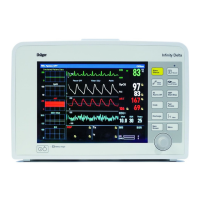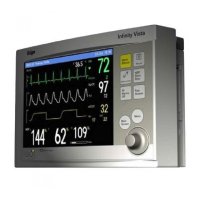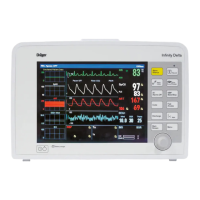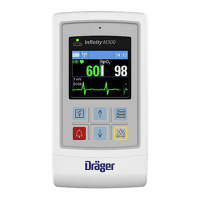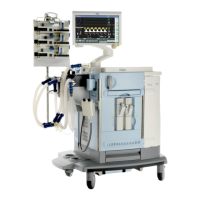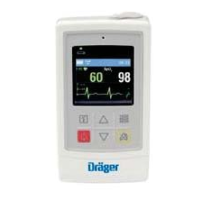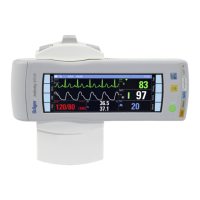ALARMS AND ALARM CONDITIONS
VF8 DELTA/DELTA XL/KAPPA 8-17
Alarms and Alarm Conditions
Asystole and Ventricular Fibrillation – If ECG monitoring is active and the
monitor displays at least one ECG waveform, asystole and ventricular
fibrillation alarm conditions are annunciated even when arrhythmia
monitoring is set to
OFF.
High P-Waves and T-Waves – High-amplitude (> 0.2 mV)
P- or T-waves of long duration may be detected as QRS complexes. To allow
the monitor to properly detect low heart rate conditions in such cases, place
the lead with the highest R-wave (relative to the T- and/or P-wave) in channel
ECG1. If the monitor continues to misinterpret P- or T-waves, reposition the
electrodes or use a pulse oximeter to monitor the patient's pulse rate.
Disconnected Electrodes – If more than one electrode is disconnected,
messages are cycled. When any lead is reconnected, all lead data shows a
1 mV pulse in each waveform. The monitor displays the following messages,
depending on whether the electrode is essential for QRS processing:
— ECG Leads invalid – Disconnected electrode is essential
— <XX> Lead Off – Disconnected electrode is not essential

